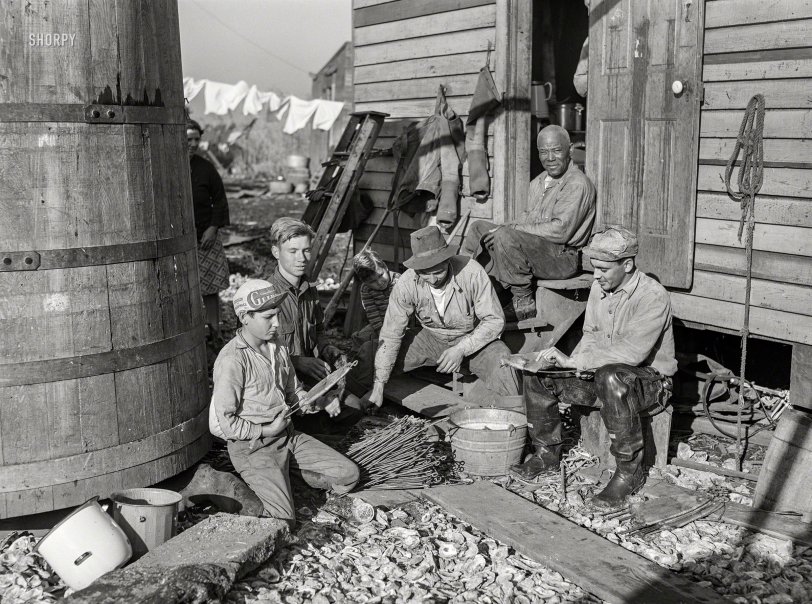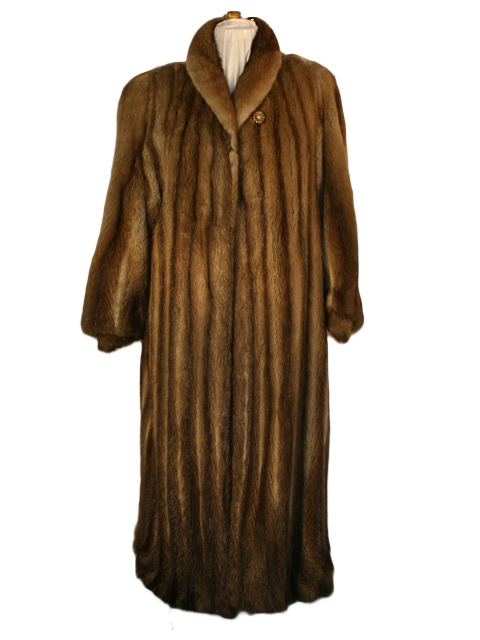


Framed or unframed, desk size to sofa size, printed by us in Arizona and Alabama since 2007. Explore now.
Shorpy is funded by you. Patreon contributors get an ad-free experience.
Learn more.

- Baldwin 62303
- Baldwin VO-1000
- Cold
- No expense spared
- Tough Guys
- Lost in Toyland
- And without gloves
- If I were a blindfolded time traveler
- Smoke Consumer Also Cooks
- Oh that stove!
- Possibly still there?
- What?!?
- $100 Reward
- Freeze Frame
- Texas Flyer wanted
- Just a Year Too Soon
- WWII -- Replacing men with women at the railroad crossing.
- Yes, Icing
- You kids drive me nuts!
- NOT An Easy Job
- I wonder
- Just add window boxes
- Icing Platform?
- Indiana Harbor Belt abides
- Freezing haze
- Corrections (for those who care)
- C&NW at Nelson
- Fallen Flags
- A dangerous job made worse
- Water Stop
Print Emporium
The Four Muskrateers: 1941

January 1941. "Spanish trappers putting muskrat skins on wire stretchers before hanging them up to dry in back of their marsh camp. Delacroix Island, Saint Bernard Parish, Louisiana." Acetate negative by Marion Post Wolcott for the Farm Security Administration. View full size.
Islenos
The Islenos came from the Spanish Canary Islands to Louisiana in the 1770’s and settled in the St. Bernard parish area (south of Orleans parish). This area was heavily damaged in Hurricane Katrina but a lot of their descendants are still there. The were fabulous hunters, trappers, oystermen and fishermen.
I remember in the late 50’s still seeing muskrat skin drying in the winter sun. It was an excellent way to get rid of this invasive species but, alas, people did not desire muskrat fur coats. Louisiana currently has a bounty of $3-5 for each muskrat tail brought in. Muskrats are notorious for burrowing into levees and weakening or destroying them, hence the bounty.
The Muskrat as Fur Bearer with Notes on Its Use as Food
imitation mink, gloves, hats, collars, coat linings, etc
https://books.google.com/books?id=G8mBIE_sPnAC&pg=PA16&lpg=PA16&dq=muskr...
Muskrat love
Like captivated, I was surprised that people were trapping muskrats for their pelts. It turns out, they made distinctive fur coats on their own, or could be dyed to match (or fake) mink.

Fur coats
According to Wikipedia, making fur coats out of muskrat fur was a thing back then.
Price inversely related to demand for Mink
"Muskrat can be dyed and used to make coats that resemble mink,” Mott said.
Muskrat finery can run $1,300 to $4,000. In general, back fur is used for coats and hats, and belly fur for trim.
From
https://www.dispatch.com/article/20120115/SPORTS/301159783
You really need to click on the link. Economics, foreign trade, substitution effects, and Baptist ministers picking up a little cash.
I just don't know ...
What makes a trapper a "Spanish" trapper? Did ethnicity categorize trappers in the Mississippi delta?
In 1940, what was the commercial use of muskrat skins?
























On Shorpy:
Today’s Top 5